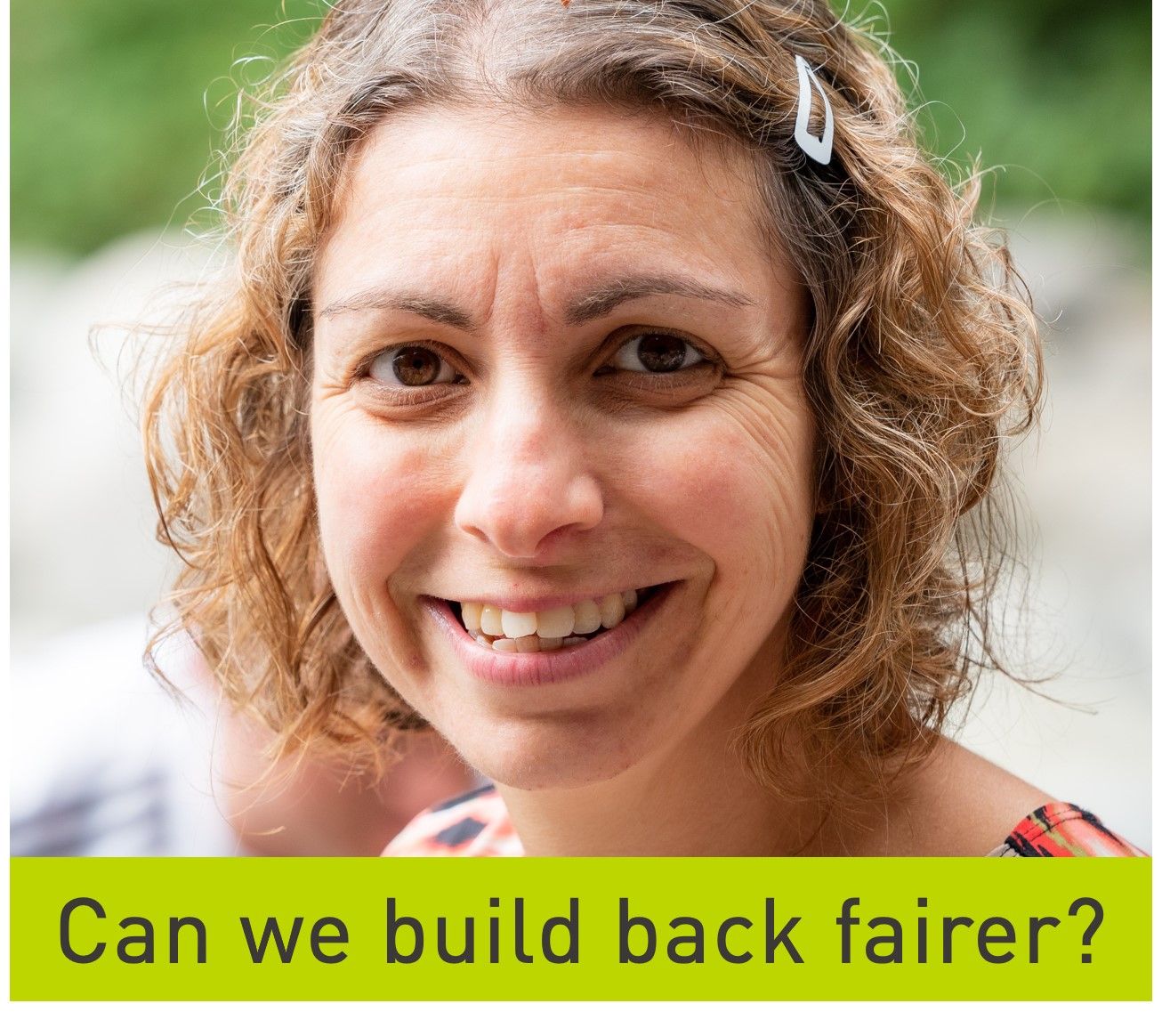Can build back better be fairer?

Hannah Budnitz is a Research Associate in Urban Mobility at the Transport Studies Unit, University of Oxford. This is her first postdoctoral position, but she has a background in transport policy and planning, working in both the private and public sectors. Her areas of interest include transport’s role in tackling climate change, how shared and virtual transport options influence the flexibility of activity patterns, the potential of data and technology to deliver innovative transport solutions through public-private-academic partnerships, and the basic interactions between land use and accessibility, sustainability and resilience.
Originally posted on December 27, 2020 on Hannah’s own blog, Hannah asks if we can build back fairer?
As we reach the end of a difficult year, we are all looking forward to the next one – one in which we regain the freedom to move around more, go places, see people, participate in activities in person. We have missed out on connecting, which is the main purpose of transport systems. Although it is also the main purpose of telecommunications systems, these could only offer incomplete substitutes for some of the most meaningful types of connecting.
Yet transport systems and the connections they offer cannot, will not, and should not return in all the same forms they took less than a year ago.
We need to continue to encourage walking, cycling and other forms of active travel that improve public health. We need to help people renew their confidence in the safety of public transport. We need to reduce the amount of travel per person, where telecommunications can replace unnecessary mileage.
As the slogans go, we need to support a ‘green recovery’ and ‘to build back better’ in transport as in other sectors. If we are to avoid further crises, it is time to take the decarbonisation of transport seriously and reduce local air pollution as well.
A switch to electric cars is part of the solution, but my current and future research suggests that we need to put this switch into perspective, not only because it is not the whole of any environmental solution, but also because the transition to electric mobility will not be a socially just solution without efforts to make it so.
This year has highlighted the importance of redressing decades of social injustices due to race, poverty, and gender as much as it has taught us not to ignore our vulnerability to natural disasters. It is as important to build back fairer as it is to build back greener.
My research looks at both the social and the environmental through the lens of the transition to electric mobility. If the replacement of petrol and diesel with electric is to be fair and equitable, then how do we recognise different needs and capabilities, enable more participation in identifying solutions, and make sure the relevant infrastructure is built in an accessible way?
Electric cars are very expensive, but they are becoming more affordable to purchase, lease or access on the now-developing second-hand market. Yet what about post-purchase? Any household who can plug their electric car into their home electricity overnight whilst they’re sleeping will rarely have to make a special trip to refuel and will save money on the daily costs of running a car.
In contrast, those who rent and / or live in flats and terraced housing are less likely to have a private garage or driveway to park and charge an electric car. So how do we build the right sort of charging infrastructure in the right places so that drivers who cannot charge an electric car at home aren’t put at a disadvantage? How do we make public charging affordable?
How do we also make it safe and convenient if such characteristics are subjective and the majority of electric car owners and enthusiasts are currently men? How do we involve women, or those on low incomes, or those from different ethnic backgrounds in the forums on and front lines of implementing electric charging infrastructure?
Will the solutions for central urban areas be the same as those in the suburbs, small towns, or villages? For whom is shared electric transport, or micro-mobility (e.g., e-bikes and scooters) a more accessible solution?
These are the types of questions we need to begin to answer next year, as we all seek to reconnect in not just a green recovery, but an equitable one. Let’s build back better, greener, and fairer.